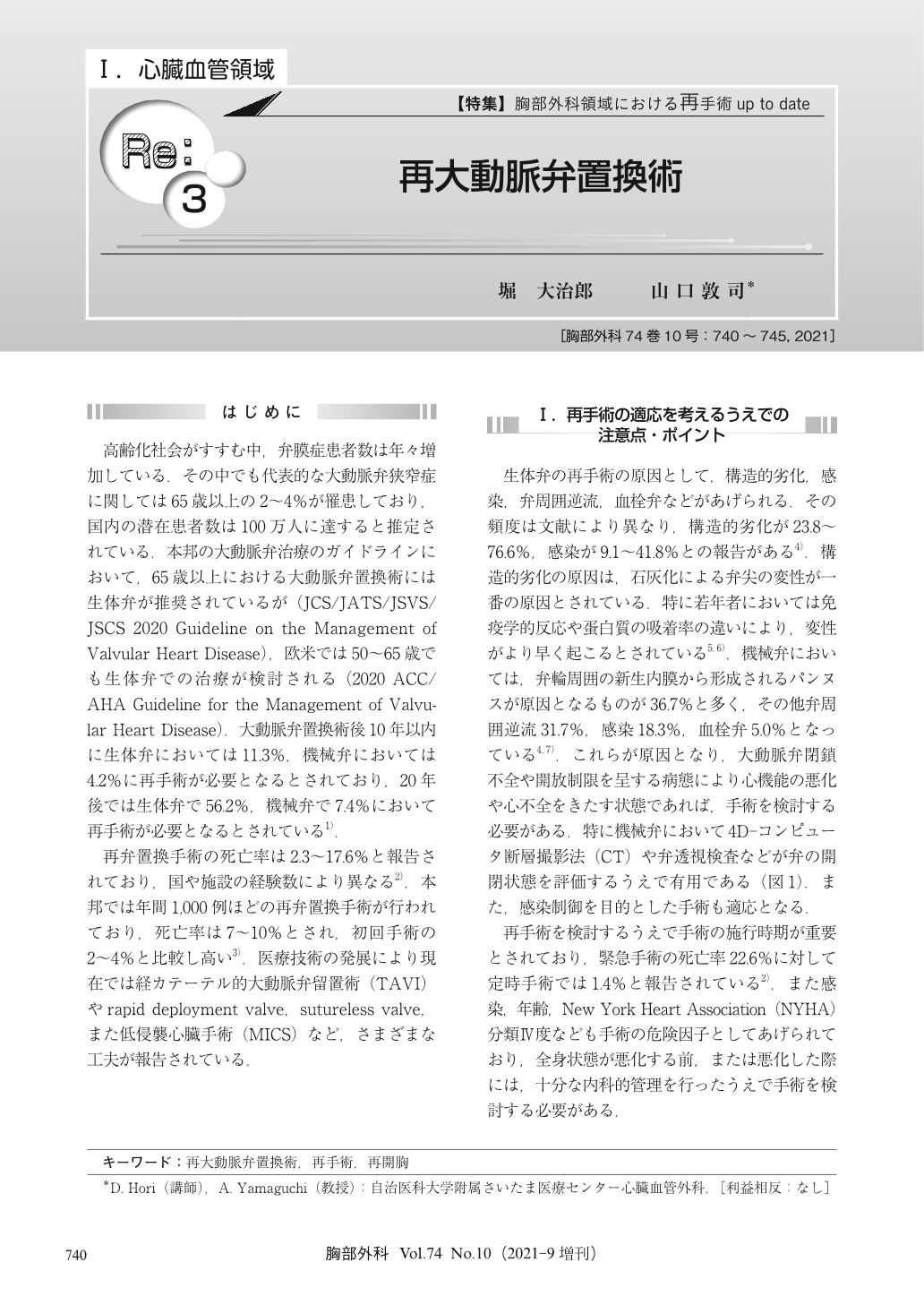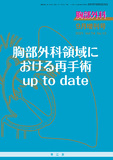Japanese
English
- 有料閲覧
- Abstract 文献概要
- 1ページ目 Look Inside
- 参考文献 Reference
高齢化社会がすすむ中,弁膜症患者数は年々増加している.その中でも代表的な大動脈弁狭窄症に関しては65歳以上の2~4%が罹患しており,国内の潜在患者数は100万人に達すると推定されている.本邦の大動脈弁治療のガイドラインにおいて,65歳以上における大動脈弁置換術には生体弁が推奨されているが(JCS/JATS/JSVS/JSCS 2020 Guideline on the Management of Valvular Heart Disease),欧米では50~65歳でも生体弁での治療が検討される(2020 ACC/AHA Guideline for the Management of Valvular Heart Disease).大動脈弁置換術後10年以内に生体弁においては11.3%,機械弁においては4.2%に再手術が必要となるとされており,20年後では生体弁で56.2%,機械弁で7.4%において再手術が必要となるとされている1).
With increasing number of patients undergoing aortic valve replacement, many patients are at risk for redo aortic valve surgery. It has been reported that 56.2% of the patients receiving a bioprostheis and 7.4% of the patients receiving a mechanical valve need reoperation 20 years after the primary surgery. Although valve in valve transcatheter aortic valve implantation (TAVI) is a less invasive approach, redo aortic valve replacement is preferred for patients with prosthetic valve endocarditis, small aortic valve prosthesis and poor access for TAVI. Special care should be prepared for safe re-sternotomy, cardiopulmonary bypass management and strategy for cardioplegia. As reported from high volume centers, redo aortic valve replacement could be performed at a similar mortality rate as the primary surgery. New prostheses such as sutureless valve and rapid deployment valve could be useful, as well as minimally invasive cardiac surgery approach, which may prevent tissue injury. However, redo aortic valve replacement via re-sternotomy remains a gold standard. Techniques and strategy for redo aortic valve replacement are reviewed.

© Nankodo Co., Ltd., 2021


